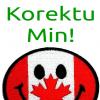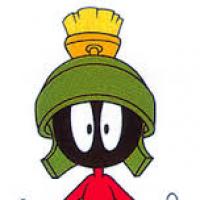讯息: 8
语言: English
Alkanadi (显示个人资料) 2015年10月12日下午2:23:42
« Ho, ĉesu! » mokante la homoj admonas,
What does « » mean?
Miland (显示个人资料) 2015年10月12日下午3:02:18
Alkanadi:What does « » mean?" "
or ' '
Mind you, it could be
-
with nothing following except a change of paragraph. Look at Nadine Gordimer's novels and you will see what I mean.
johmue (显示个人资料) 2015年10月12日下午4:31:26
Alkanadi:I was reading some of Zamenhoj's poetry and it has some funny simbols.It's the French way of quoting. In Esperanto I usually quote like “Tio estas citaĵo.” or in internet communication like "Tio estas citaĵo."
« Ho, ĉesu! » mokante la homoj admonas,
What does « » mean?
jdawdy (显示个人资料) 2015年10月12日下午4:32:00
Russian uses them instead of "Ho, ĉesu". Since Russian was one of Zsmenhoff's native languages, it would have been very normal for him to use them.
Tempodivalse (显示个人资料) 2015年10月12日下午5:29:28
jdawdy:Not sure of the actual term, but they are Russian quotation marks.In Russian it is also common to separate quotes in dialogues with long dashes, as so:
Russian uses them instead of "Ho, ĉesu". Since Russian was one of Zsmenhoff's native languages, it would have been very normal for him to use them.
-- That's odd, -- he told me. (More info)
You see this, for example, in the ~1910 translation of Knjaz' serebrjanyj (Princo Serebrjanij) by Shidlovskaja. In Esperanto this seems to have fallen into disuse.
The << >> marks are known as "French".
Nowadays most Esperanto texts, in my experience, just use the English: " "
Alkanadi (显示个人资料) 2015年10月13日上午7:18:08
johmue:It's the French way of quoting.Interesting. I didn't know that. I thought the whole world used our form of quotation marks.
The symbol at either end—double « and » or single ‹ and ›—is a guillemet. They are used in a number of languages to indicate speech.
https://en.wikipedia.org/wiki/Guillemet
Ondo (显示个人资料) 2015年10月13日下午9:03:46
Alkanadi:You have just scratched the surface. There is an interesting table in the Esperanto Wikipedia article ”citilo”. The form of the quotation marks is only one of the variables: some languages use spaces to separate the marks from the quotation.johmue:It's the French way of quoting.Interesting. I didn't know that. I thought the whole world used our form of quotation marks.
By the way, ”La vojo” was first published in the magazine Lingvo Internacia, June-July 1896. The original typography was something like this:
“Ho, ĉesu !“ mokante la homoj admonas, —
“Ne ĉesu, ne ĉesu !“ en kor’ al ni sonas:
“Obstine antaŭen ! La nepoj vin benos,
Se vi pacience eltenos.“
The spaces before the exclamation marks were quite narrow.
Tempodivalse (显示个人资料) 2015年10月13日下午9:22:38
,,quote''
I see this in EO too sometimes.




